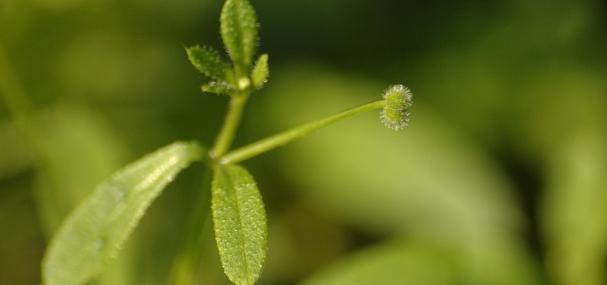Cleavers is familiar to many of us as the bristly plant that easily hooks on to our clothing as we walk through the countryside or do the gardening. Children delight in its sticky nature, frequently attaching the angular stems to each other or even their pets. For this reason, it has many other common names such as 'Sticky Bobs', 'Stick-a-back' and 'Kisses' (because lovers cling to each other too). Cleavers is a climbing plant, using its hooks to aid its scrambling progress; the hooks on its fruits attach to animals and help to disperse its seeds.
Some of our most abundant species are often treated as 'weeds' when they appear in the garden. Yet they can be extremely beneficial to wildlife, providing food for nectar-loving insects and shelter for minibeasts. Try leaving wilder areas in your garden and see who comes to visit... To find out more about wildlife-friendly gardening, visit our Wild About Gardens website: a joint initiative with the RHS, there's plenty of facts and tips to get you started.
